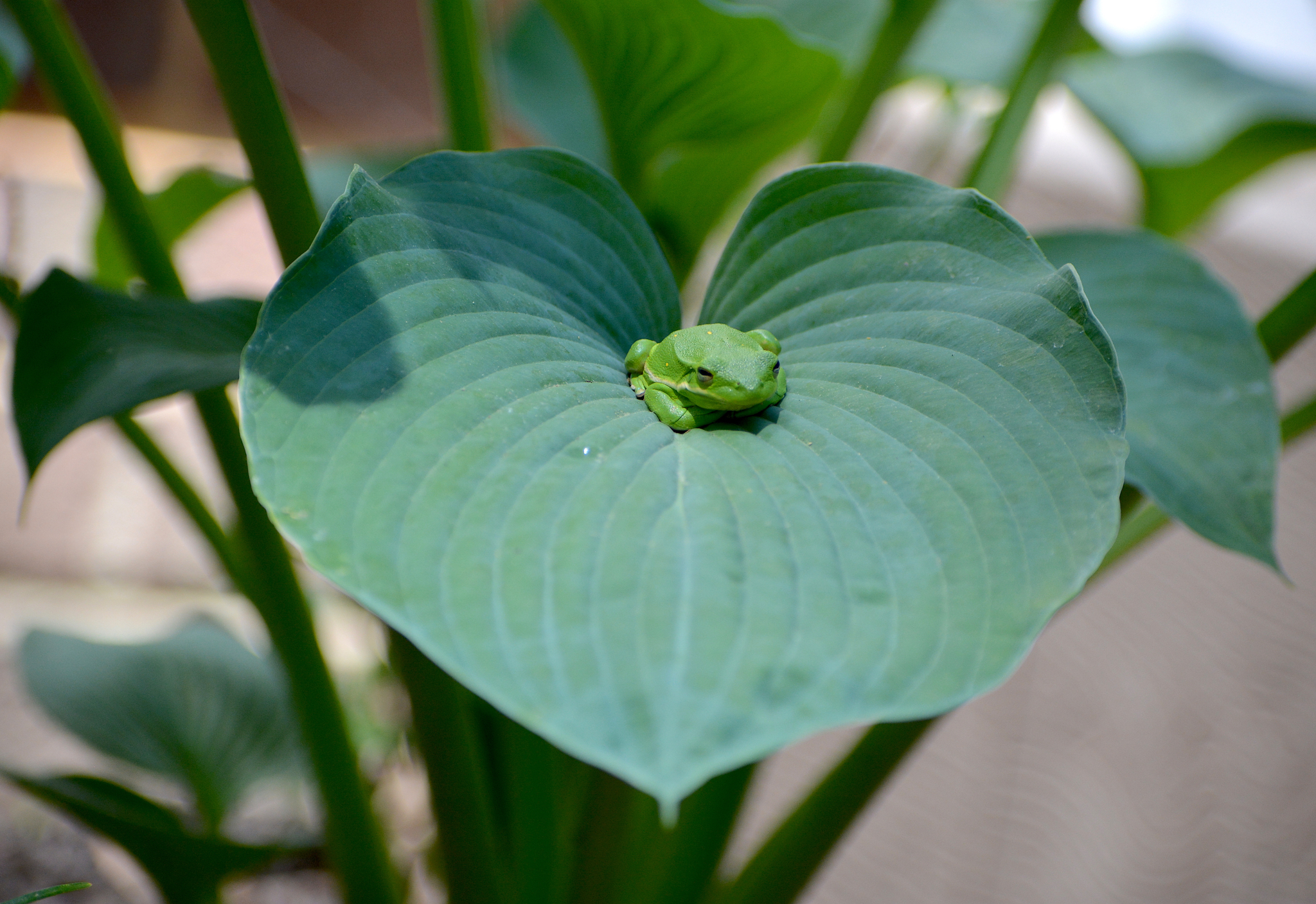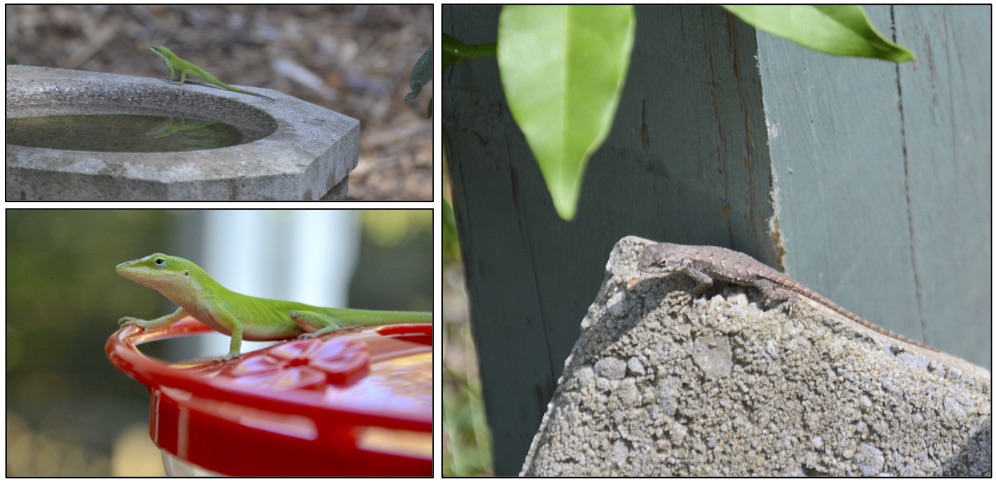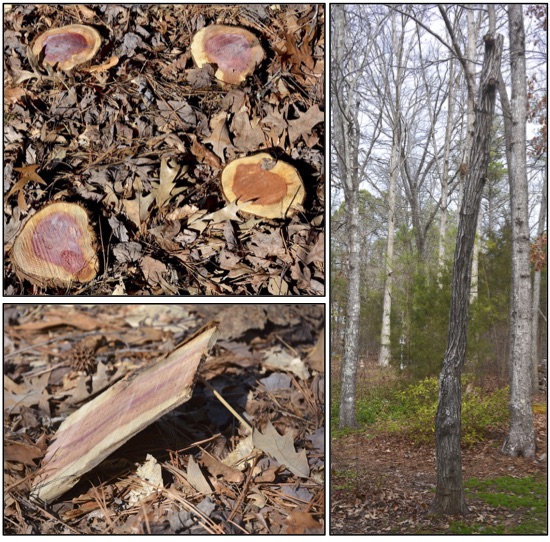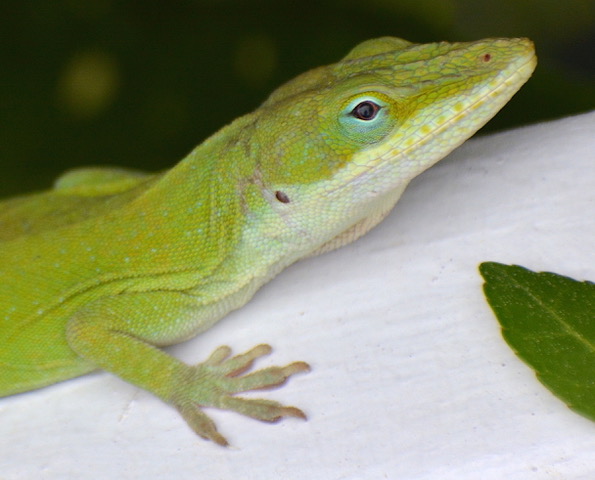Snags, Tree Cookies, and Lean-tos: Things You Can Do To Help Reptiles and Amphibians in Your Yard
go.ncsu.edu/readext?685306
en Español / em Português
El inglés es el idioma de control de esta página. En la medida en que haya algún conflicto entre la traducción al inglés y la traducción, el inglés prevalece.
Al hacer clic en el enlace de traducción se activa un servicio de traducción gratuito para convertir la página al español. Al igual que con cualquier traducción por Internet, la conversión no es sensible al contexto y puede que no traduzca el texto en su significado original. NC State Extension no garantiza la exactitud del texto traducido. Por favor, tenga en cuenta que algunas aplicaciones y/o servicios pueden no funcionar como se espera cuando se traducen.
Português
Inglês é o idioma de controle desta página. Na medida que haja algum conflito entre o texto original em Inglês e a tradução, o Inglês prevalece.
Ao clicar no link de tradução, um serviço gratuito de tradução será ativado para converter a página para o Português. Como em qualquer tradução pela internet, a conversão não é sensivel ao contexto e pode não ocorrer a tradução para o significado orginal. O serviço de Extensão da Carolina do Norte (NC State Extension) não garante a exatidão do texto traduzido. Por favor, observe que algumas funções ou serviços podem não funcionar como esperado após a tradução.
English
English is the controlling language of this page. To the extent there is any conflict between the English text and the translation, English controls.
Clicking on the translation link activates a free translation service to convert the page to Spanish. As with any Internet translation, the conversion is not context-sensitive and may not translate the text to its original meaning. NC State Extension does not guarantee the accuracy of the translated text. Please note that some applications and/or services may not function as expected when translated.
Collapse ▲By Wendy Diaz, Extension Master Gardener℠ volunteer in Durham County
This article was originally posted on the Extension Master Gardener℠ program of Durham County Blog. For more articles like this, and to subscribe, visit their website.
At the beginning of this year and before the COVID-19 pandemic impacted the world, I attended a talk by Brian Bockhahn, regional education specialist, North District Office of the North Carolina State Parks entitled “Reptiles and Amphibians in Your Garden.” It was impossible not to be drawn in by his enthusiasm and impressed with his advocacy for our native reptiles and amphibians. These “cold-blooded animals are in the group called herpetofauna or herps for short1.” He was an engaging speaker and his passion for herps was ‘contagious’ and inspired me to write this article and even though I am more of a bird lover he made me more appreciative of these animals.

Possibly a small brown snake (Storeria dekayi) under my rose arbor (not on the snake list for the Piedmont) Photo by Wendy Diaz April 11, 2019.
Snakes
In Piedmont North Carolina, we have many reptiles including six species of small ground snakes: worm snake, smooth earth snake, brown snake, rough earth snake, ring neck snake and red belly snake; and, several medium-sized snakes: black rat snake, black racer, eastern king snake, rough green snake, corn snake, eastern hognose snake, eastern garter snake; and, one venomous snake, the copperhead. The copperhead has darker brown cross-bands that look like Hershey kisses and is most active at dusk. The copperhead is a native species of all 100 North Carolinian counties and is typically not aggressive and poses a threat only if provoked and for the most part ‘wants not to be seen.’ In addition to describing these snakes, Brian explained how to handle them if they need to be removed from an area. A six-foot-long snake stick with hook is the best way to move a snake and don’t use tongs or pincers.
Frogs
There are nine frogs in our area consisting of four True frogs: American bullfrog, Green frog, Southern leopard frog and the Pickerel frog, and five Tree frogs: Green tree frog, Cope’s gray tree frog, Northern cricket frog, Upland chorus frog and the Spring peeper. The Green tree frog was once only found on the coastal plain but now is common in southern Durham County.

This Green tree frog (Hyla cinerea) appreciates even my non-native plant as a basking site. Photo by Wendy Diaz May 2, 2019.
Here are lists of other herps in our area:
| Turtles Snapping turtle Painted turtle Eastern box turtle Yellowbelly slider |
Lizards Green anole Eastern fence lizard Five-lined skink Broadhead skink Southeastern five-lined skink |
Toads American toad Fowler’s toad Eastern-narrowmouth toad Southern toad |
Salamanders Eastern newt Marbled salamander Spotted salamander Southern dusky Salamander Two-lined salamander White-spotted slimy salamander |
Herps are beneficial by keeping their prey in check. For example, salamanders eat insect larvae and snakes eat rodents1, frogs eat insects and in turn frogs are prey for fish, birds, and reptiles. Amphibians, because of their permeable skin, are an important harbinger of toxins in the environment and are an indicator of environmental health of an ecosystem.
How You Can Help
With the increase in construction and development in the Piedmont of North Carolina, amphibians and reptiles are suffering from habitat loss and fragmentation, traffic hazards and sedimentation and pollution in urban and suburban areas. The Eastern box turtle (Terrapene carolina), the state reptile, used to be very common and is declining in population due to habitat loss and fragmentation and road kills. It needs a one- to two-square mile range, reaches sexual maturity at six years of age and can live to be 100 years old. If you are lucky enough to have a vernal pool on your property, protect it as these seasonally wet or ephemeral pools provide essential breeding areas for frogs, toads and salamanders to hatch and turn into terrestrial adults.
We, as gardeners, are already plant naturalists and are aware that the plant choices we make can benefit birds and beneficial insects and this practice also benefits amphibians and reptiles. So why not help out the fauna as well as the flora with some other horticultural endeavors and practices and use our yards for maximum benefit for our stressed out environment/ecology. Besides planting natives, additional garden practices are needed to help our herps. Amphibians need both wet and dry sites. Ideally, a pool or pond (without fish) will benefit amphibians but if you can’t provide breeding habitat you can provide shelter and basking sites for these cold-blooded animals. Even crevasses under rocks or stump holes provide access to hibernacula or places for reptiles to hibernate in the winter. Natural features like dead vegetation and logs provide cover for herps as well as brush piles, rock piles and even amphibian houses.1 Upside down clay flower pots (or toad abodes) with portion of lip removed for a door placed in a shady part of your yard is ideal for toads and salamanders. Tree stumps make stools and rock walls and logs become good basking sites.

Clockwise from top left: Even a garden birdbath can provide valuable resource to a green anole during the summer. Eastern fence lizard (Sceloporus undulates) enjoys some sunshine and warmth on a rock pile. Green anole about to ambush a fly on the hummingbird feeder. All Photos by Wendy Diaz, 2019.
Other simple things Brian recommended for ‘Backyard Habitat Enhancement’ are:
- Snags – A dead standing tree that provides good habitat for birds2 also provides lizards with good shelter to cool off or to hide from predators and to ambush prey like insects for food.
- Tree cookies – Slices of a tree trunk or wood discs that hold the moisture in the ground beneath and make a nice refuge for a salamander.
- Lean-tos – An untreated piece of wood supported by a stick on one side located beneath a shade tree with natural leaf litter provides shelter for a turtle to cool off during the hot summer months.

Clockwise from top left: Tree cookies for salamanders: six inch slices of red cedar over leaf litter below beech tree in back yard. Snag or upright dead tree. Lean-to for a turtle made from thin piece of untreated wood and a stick for support. All Photos by Wendy Diaz, 2020.
Other very helpful practices are: keep cats indoors, brake for turtles, plant native diversity, reduce yard mowing, leave natural areas, limit chemical use, and let a tree fall and rot in the woods. These ‘chain-saw’ chairs from a dead tree can both provide habitat for herps and decorate the garden.

Arrows point to herp backyard habitat enhancements and garden accents: rock wall, tree stump and chainsaw chairs.
Photo taken by Wendy Diaz April 13, 2019.
As it got warmer outside this spring, watching my resident lizards bask in the sunshine during these past few weeks of social isolation has unexpectedly brought me joy as they continue with their lives blissfully unaware of what has befallen us humans. Although I frequently see lizards and snakes I have yet to observe salamanders, hopefully, that will change with my new tree cookies.
Here is a challenge while we stay at home, why not try to observe (no touching) as many reptiles and amphibians in your yard and garden as you can and share your observations with iNaturalist. If you are having trouble identifying the herp species, this is a useful website. If you don’t find any, maybe it is time to add some snags, tree cookies, and lean-tos in your yard.
References:
Want to learn more about how you can help local reptiles and amphibians? Check out these excellent resources:





